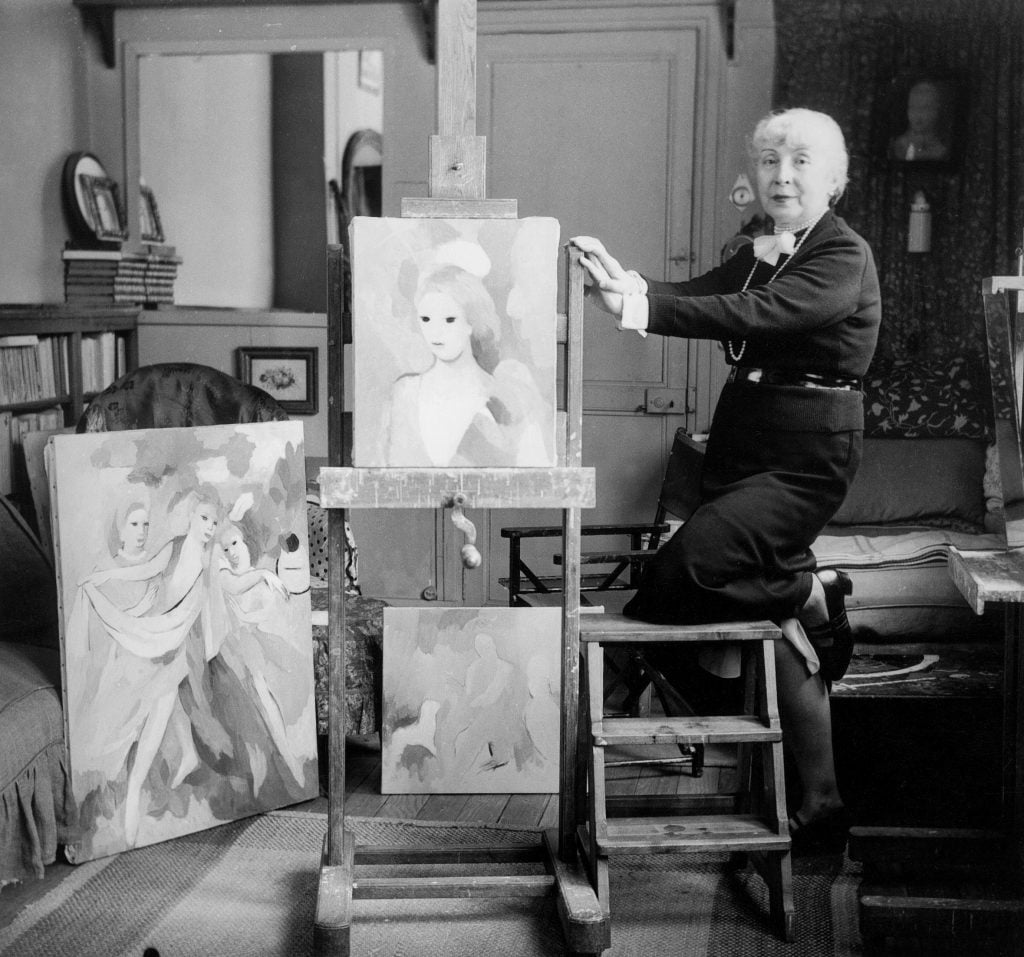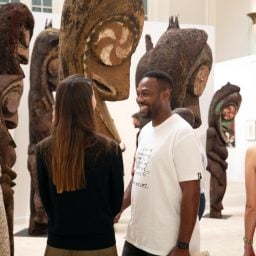The details of Marie Laurencin’s life are so incredible that her story sounds like a movie in the making. In fact, it’s shocking to me that the French artist (1883-1956) doesn’t have better name recognition.
What didn’t she do?
In her 20s, she mingled with Pablo Picasso and his Cubist circle in Paris, attending Gertrude Stein’s salons and acting as a muse for poet Guillaume Apollinaire, who was her lover.
After marrying a German baron, she spent her 30s in Spain as an expat during World War I. There, she hung out with Diego Rivera and collaborated with Francis Picabia on his Dadaist magazine, 391.
Back in Paris and newly single in the roaring 1920s, Laurencin spent her 40s rising to critical and financial acclaim. The epitome of a cosmopolitan modern woman, she had affairs with men and women, attended the queer soirées of Natalie Clifford Barney, did portraits of Coco Chanel and Helena Rubinstein, and created stage sets and costumes for Sergei Diaghilev’s Ballets Russes. Prominent art dealer Paul Rosenberg gave her a solo show. Collectors including Albert Barnes vied for her work.
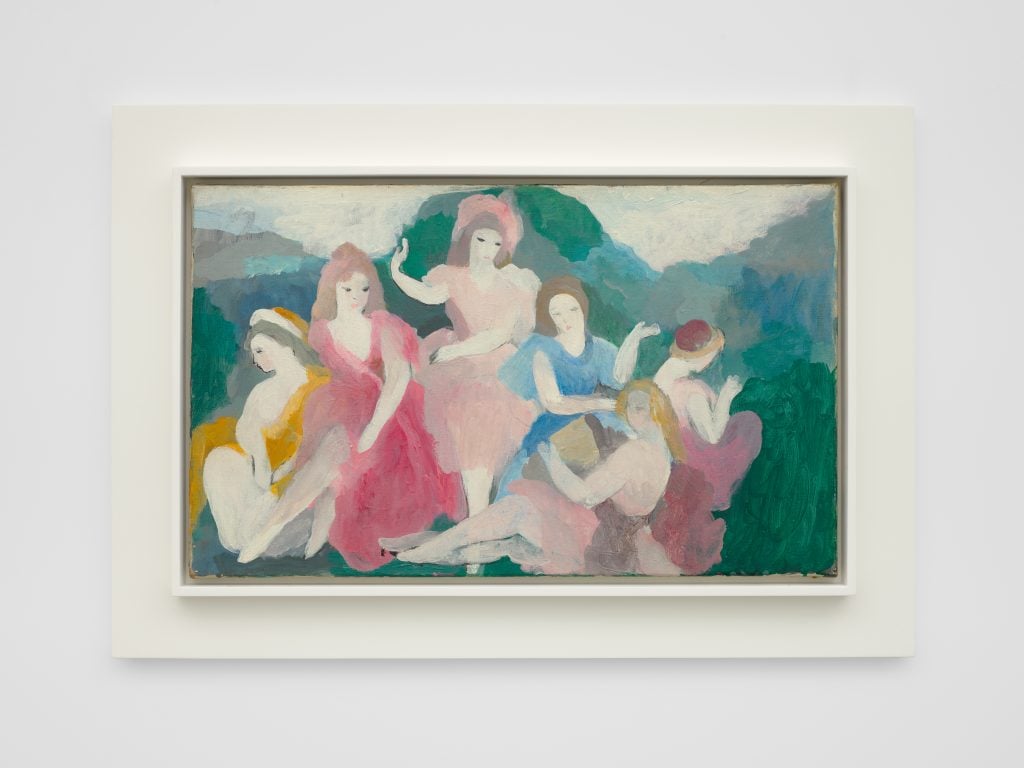
Marie Laurencin, Group of Young Women (1930). Courtesy: Nahmad Contemporary.
In the 1930s, she was awarded the Legion of Honor, France’s highest national decoration. The sales of her art made her wealthy enough to buy a country house and lend money to friends.
Three decades after her death, Japanese collector Masahiro Takano fell so hard for the naïve-looking, big-eyed, cartoonish maidens populating Laurencin’s world that he established the Marie Laurencin Museum in Nagano-Ken, Japan, the first-ever institution dedicated to a female artist in Japan.
In 1989, Takano paid $1.4 million for her dreamy painting La Vie au Chateau, at Sotheby’s, making Laurencin the third-most-expensive female artist at auction that year following Mary Cassatt and Georgia O’Keeffe. (That sale still remains the artist’s auction record). Laurencin’s artworks generated $29.3 million at auction over two years in 1989 and 1990, with the average lot price of $84,100, according to Artnet Price Database.
Then… the stock market crashed. Japanese buyers got wiped out, ensuing years of doom and gloom in the art market. Laurencin’s prices cratered along with the rest of the Impressionist and modern art market. A decade later, her market was a shadow of its former self, with an average lot going for $9,500, with just $1.6 million in total sales annually.
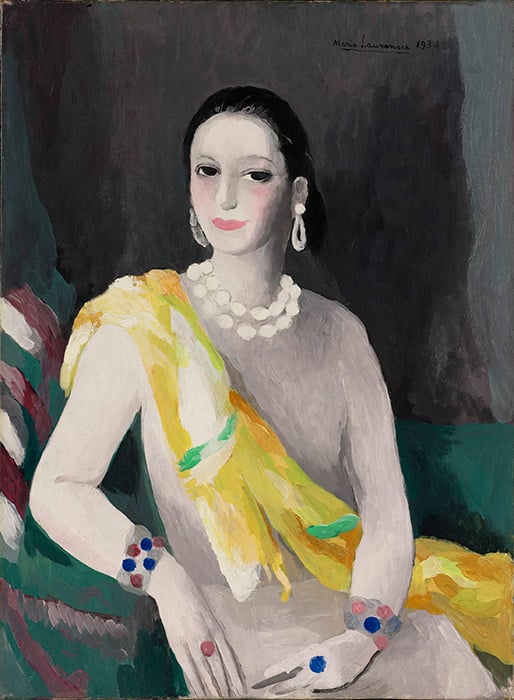
Marie Laurencin, Portrait of Helena Rubinstein (1934)
Courtesy Artists Rights Society (ARS), New York / ADAGP, Paris.
Laurencin’s prices never fully recovered. Her name was all but forgotten in the U.S. Her annual auction sales never again reached $3 million, according to Artnet Price Database.
But change is afoot, and a combination of forces is creating momentum for the artist’s rediscovery.
First up, the blue-chip Nahmad Contemporary gallery will do a solo presentation of Laurencin’s work at the trendsetting Independent 20th Century art fair next month in New York. Then the Barnes Foundation in Philadelphia will stage “Marie Laurencin: Sapphic Paris” in October, the first museum survey in the U.S. dedicated to the artist in more than 30 years.
She might even get some bounce from this summer’s runaway hit movie, Barbie. Why, you ask? Despite her fluidity in various media, from fashion to printmaking, Laurencin is best known for depicting women as somewhat mythic, diaphanous, and always very pretty. Are these characters furthering the stereotypes of women or subverting them? Sounds like the question at the heart of Barbie.
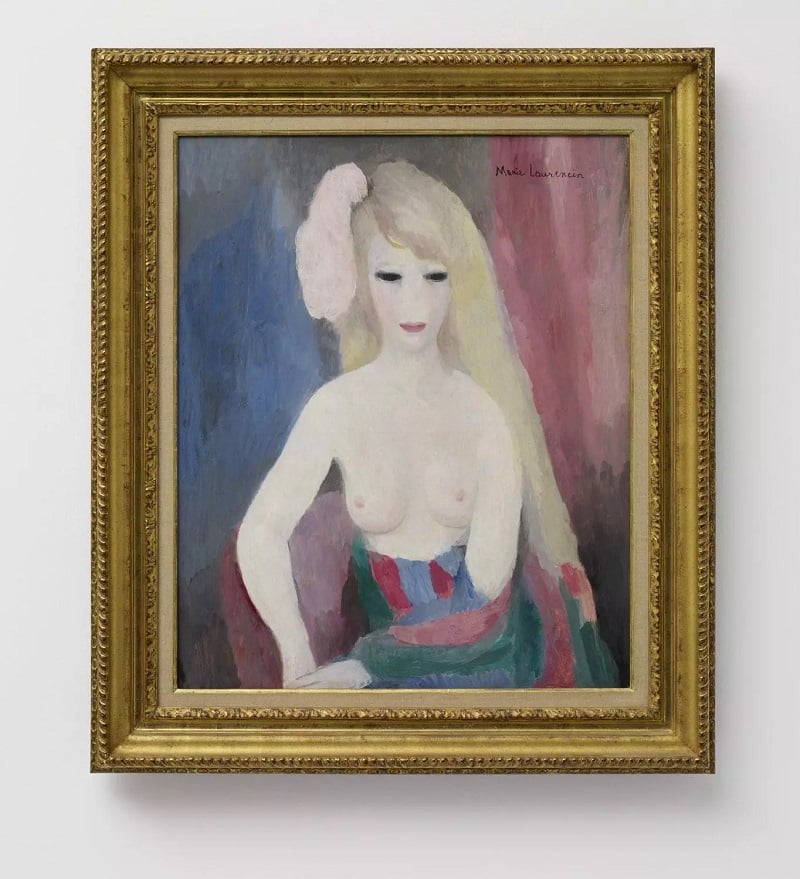
Marie Laurencin, Buste de femme aux seins nus (circa 1926). Courtesy of Nahmad Projects.
And the answer depends who you ask. Laurencin’s champions want you to see a deeper, graver dimension in the work that at first glance looks rather traditional. Ethereal and long-limbed, her female subjects appear alone or in groups, often accompanied by a doe. They have enormous eyes. Their noses are sometimes aquiline and other times missing all together. Early paintings borrow amply from modern masters like Paul Cézanne and contemporaries like Picasso.
But while she had painted men in her life (and there’s a striking canvas of Picasso’s circle, with the Spaniard surrounded by Stein, Fernande Olivier, Apollinaire, and Laurencin herself in a pastel blue dress), the subjects of her mature work are almost entirely female.
“She forged this alternative to modernism, which unabashedly embraces feminity,” said Michelle Molokotos, a director at Nahmad Contemporary. “It’s a female painting females, outside of a male gaze. It’s so traditional, it’s almost radical.”
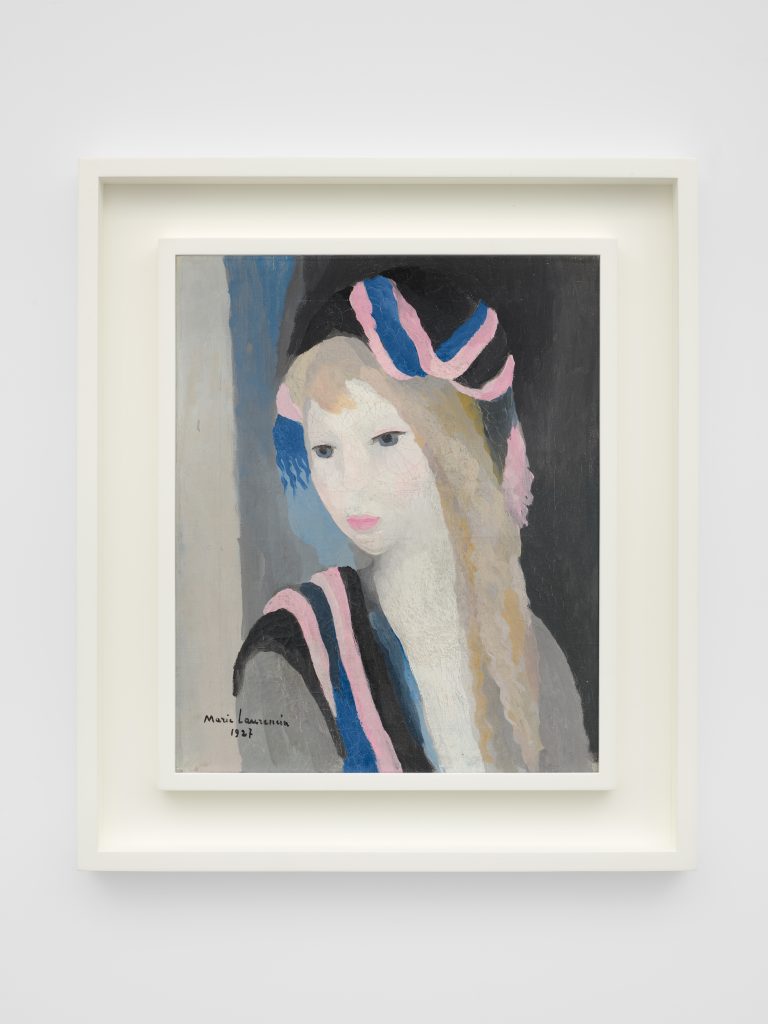
Marie Laurencin, Bust of a Woman (1927). Courtesy: Nahmad Contemporary
The gallery’s show will feature 10 of Laurencin’s works, mainly from the 1920s and 1930s consigned by various private collections, including the Nahmads themselves, who have been buying her works for a long time, Molokotos said. Prices range from $50,000 to $250,000.
The Barnes exhibition “hinges on the fact that her work visualized that to be queer is to be modern,” according to co-curator Cindy Kang. “It was true in the 1920s and it is true today. The fluidity of gender and sexuality is very much part of contemporary culture. Marie Laurencin was part of that world in the 1920s. And you see her relevance in today’s world.”
The show will include about 60 works, with loans coming from the Metropolitan Museum of Art, the Museum of Modern Art, the Tel Aviv Museum, Paris’s Musée de l’Orangerie, and Yale University.
The dreamy quality of Laurencin’s art represents a “radical utopian vision,” Kang said. “A world where women are free to be with other women, a world where boundaries between animals and humans are more porous, a world where you are not confined by categories and can be who you are.”
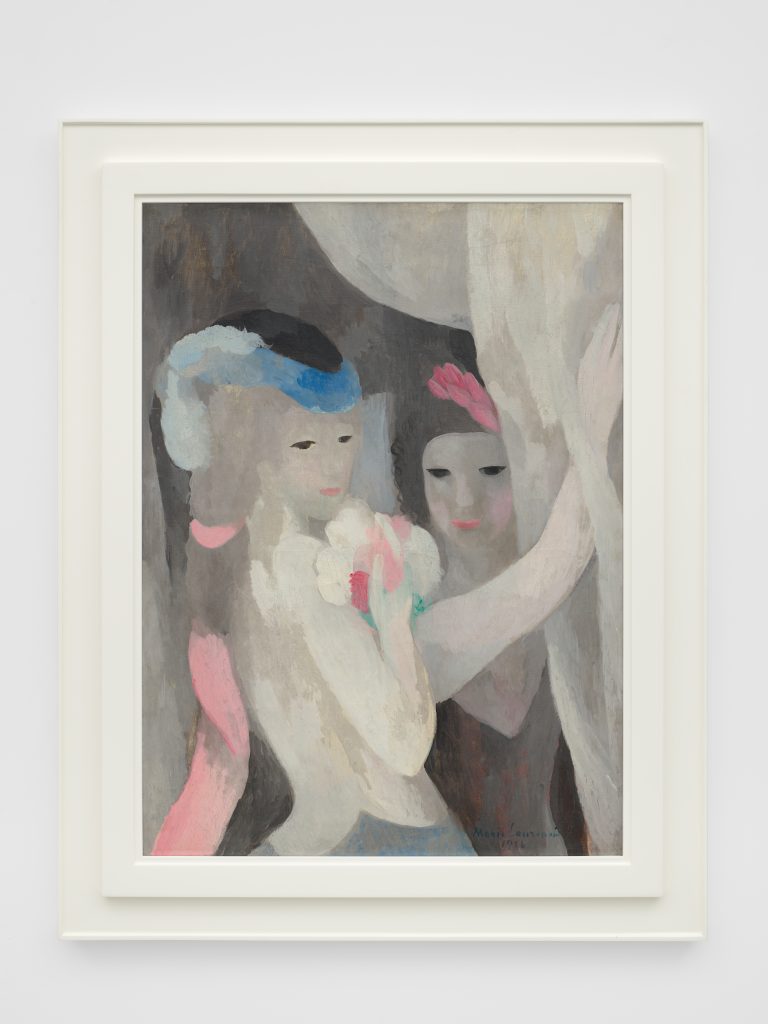
Marie Laurencin, Two Women at the Curtain (1924). Courtesy: Nahmad Contemporary.
While they are easy to dismiss as too feminine, the paintings have a coded language, she added. “The way these women’s limbs are interwoven, you start to pick up on very subtle eroticism.”
Laurencin’s sweet-looking art didn’t translate well after the horrors of the World War II, as the center of cultural gravity moved across the ocean to the United States and she was left in a newly unfamiliar world. “She produced a lot and in hindsight, it didn’t help her reputation,” Kang said.
The artist spent her final decade in a relationship with a woman, Suzanne Moreau, whom she adopted as a daughter so that she would be legally recognized as her heir. Today, both are long gone.
But now, is it possible that the moment for Laurencin’s art is finally at hand? At the very least, a new chapter in her glamorous life story is about to begin.
